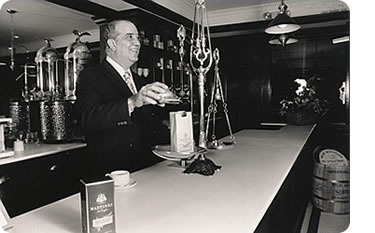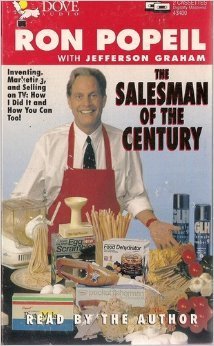Marc Abrahams's Blog, page 437
December 23, 2013
Lester’s Latest: “A scale to measure the desire to be dead”
 Professor David Lester, one of the most prolific producers (more than 2500 publications so far!) of academic publications, is still reliably cranking out nuggets. This is one of his latest:
Professor David Lester, one of the most prolific producers (more than 2500 publications so far!) of academic publications, is still reliably cranking out nuggets. This is one of his latest:
“A scale to measure the desire to be dead,” David Lester, Omega, 2013;67(3):323-7. Professor Lester explains:
“The aim of the present research was to develop a brief scale to measure the wish to be dead. Two samples of undergraduate students were administered a brief 10-item scale to measure the wish to be dead…. The wish to be dead scale [appears to] measure a state of mind different from suicidal ideation and obsession with death.”
BONUS: Professor Lester explains his secret to success
BONUS: One of Professor Lester’s many publications about shopping.
BONUS: Professor Lester on Helplessness, Hopelessness, and Haplessness

Crocs, Fruits and Seeds
Perhaps it’s not all that widely appreciated that several members of Crocodylia (that’s the taxonomic order, not a thrash metal band) are quite partial to a bit of fruit now and again. In fact, reveals a new paper in the Journal of Zoology “ … there is little doubt that on occasion, fruit is deliberately consumed, often in large quantities.“ Here’s video confirmation:
Leading to the question, has the study of Saurochory (seed dispersal by reptiles) overlooked the possible implications of Frugivory (eating fruit) by Crocodilians (crocodiles, alligators &etc.)?
The possibilities are discussed in : ‘Frugivory and seed dispersal by crocodilians: an overlooked form of saurochory?’ by authors Platt, Elsey, Liu, Rainwater, Nifong, Rosenblatt, Heithaus and Mazzotti (Journal of Zoology, Volume 291, Issue 2, October 2013 , pp. 87–99)
“Saurochory (seed dispersal by reptiles) among crocodilians has largely been ignored, probably because these reptiles are generally assumed to be obligate carnivores incapable of digesting vegetable proteins and polysaccharides.
[...]
Although there is no evidence for a crocodilian-specific dispersal syndrome similar to that described for other reptiles, our review strongly suggests that crocodilians function as effective agents of seed dispersal. Crocodilian saurochory offers a fertile ground for future research.”
Note: Dr. Rainwater, of the Medical University of South Carolina, has also performed a ‘Population Assessment of American Crocodiles (Crocodylus acutus) in Turneffe Atoll, Belize, 2008′

December 22, 2013
Most of sex and biology explained, maybe (by fingers)
A person could use this new study to make sense of almost all aspects of biology and sex, if a person had a way of doing so:
“Sociosexual Orientation and 2D:4D Ratios in Women: Relationship to Men’s Desirability Ratings as a Long-Term Pair Bond,” Tara L. DeLecce, John P. Polheber, Robert L. Matchock [pictured here], Archives of Sexual Behavior, epub December 20, 2013. The authors, at Wayne State University and Penn State University, explain:
“The current study examined whether men’s ratings of women’s desirability as a long-term pairbond, based on static photographs, were related to the women’s second-to-fourth digit (2D:4D) ratio and their sexual attitudes and behavior. The 2D:4D ratio was measured in 164 women and facial photographs were taken of 55 of these women. All women completed the Sociosexual Orientation Inventory (SOI). Male participants (n = 89), masked to this information, rated the 55 female participants on their desirability as a long-term sexual partner, specifically along dimensions of faithfulness, youthfulness, and attractiveness. Ten independent judges rated women’s photographed faces on masculinity. Results indicated a significant negative relationship between women’s SOI scores and men’s faithfulness ratings (more unrestricted sociosexuality was associated with lower faithfulness ratings). There was also a significant positive relationship between right (but not left) 2D:4D ratio and faithfulness ratings (women with female-like ratios were rated as being more faithful).”

December 21, 2013
An Arielian take on trying digestively-processed coffee
 Ig Nobel Prize winner Dan Ariely [pictured here, right] answers a reader’s question about a substance that produced an Ig Nobel Prize in 1995. A reader of Ariely’s blog asked:
Ig Nobel Prize winner Dan Ariely [pictured here, right] answers a reader’s question about a substance that produced an Ig Nobel Prize in 1995. A reader of Ariely’s blog asked:
During a recent trip to Los Angeles, I stopped by a coffee shop offering a very expensive coffee called kopi luwak, or civet coffee. I asked about the steep price, and the barista told me the story of the special process required to make this coffee: A catlike Indonesian animal known as a civet eats coffee cherries and then poops out what are basically beans. People then collect these “processed” beans and use them to make a highly unusual brew that’s said to be smoother than its journey. It can sell for hundreds of dollars per pound. I was curious but not interested (or brave) enough to buy it—let alone drink it. Can you explain why are people willing to pay for this? …
The 2008 Ig Nobel Prize in medicine was awarded to Dan Ariely of Duke University (USA), Rebecca L. Waber of MIT (USA), Baba Shiv of Stanford University (USA), and Ziv Carmon of INSEAD (Singapore) for demonstrating that high-priced fake medicine is more effective than low-priced fake medicine. [REFERENCE: "Commercial Features of Placebo and Therapeutic Efficacy," Rebecca L. Waber; Baba Shiv; Ziv Carmon; Dan Ariely, Journal of the American Medical Association, March 5, 2008; 299: 1016-1017.]
 The 2005 Ig Nobel Prize in nutrition was awarded to John Martinez [pictured here, above] of J. Martinez & Company in Atlanta, Georgia, for educating the world about luak coffee, the world’s most expensive coffee, which is made from coffee beans ingested and excreted by the luak (aka, the palm civet), a bobcat-like animal native to Indonesia.
The 2005 Ig Nobel Prize in nutrition was awarded to John Martinez [pictured here, above] of J. Martinez & Company in Atlanta, Georgia, for educating the world about luak coffee, the world’s most expensive coffee, which is made from coffee beans ingested and excreted by the luak (aka, the palm civet), a bobcat-like animal native to Indonesia.

An old appreciation of an Ig Nobel-winning gadgeteer
 Ig Nobel Prize-winning inventor Ron Popeil was profiled in the year 2000 by the inventive writer Malcolm Gladwell. (Thanks to Pagan Kennedy for bringing this to our attention.)
Ig Nobel Prize-winning inventor Ron Popeil was profiled in the year 2000 by the inventive writer Malcolm Gladwell. (Thanks to Pagan Kennedy for bringing this to our attention.)
Popeil was awarded the 1993 Ig Nobel Prize in the field of consumer engineering, for redefining the industrial revolution with such devices as the Veg-O-Matic, the Pocket Fisherman, Mr. Microphone, and the Inside-the-Shell Egg Scrambler. [REFERENCE: his book The Salesman of the Century : Inventing, Marketing, and Selling on TV: How I Did It and How You Can Too!, which was also made available in audio form with Mr. Popeil doing the reading.]
Here are some of Mr. Popeil’s best-known television commercials:

Personality Traits and Coffee, Tea, Cola Drinks, Smoking
A Brazilian team tried to find the connection, if any, between personality traits and the consumption of coffee, tea, and cola drinks, and smoking. Then they published a report:
“Distinct Personality Traits Associated with Intake of Coffee, Tea, and Cola Drinks and Smoking,” Diogo R. Lara, Eduardo Antoniolli, Julia Frozi, Ricardo Schneider, Gustavo L. Ottoni, Journal of Caffeine Research. June 2011, 1(2): 101-108. The authors, at Pontifícia Universidade Católica do Rio Grande do Sul and at Universidade Federal do Rio Grande do Sul, in Porto Alegre, Brazil, conclude:
“Coffee intake was only modestly related to personality traits and tea consumption showed an association with more mature and adaptive traits. In contrast, cola drink consumption was associated with more immature and maladaptive personality profiles, similar to smoking.”

December 20, 2013
Group vasectomy celebrations, then and now
Compare and contrast, if you will, these two reports of group vasectomy celebrations:
in the USA, 2013 [NBC News report]
in Thailand, 1990 ["No-scalpel vasectomy at the King's birthday vasectomy festival", The Lancet]
BONUS (unrelated): The Menstrual Joy Questionnaire

Improbable medical research about Christmas
A revisit to the medical literature: A Collection of Christmas Science, Part 1 and Part 2.
(Thanks to investigator Ivan Oransky for reminding us about our own files, which we are all too prone to forget. There’s more buried in those files…)

The creative art of Chinese pickled vegetables
 Consider, if you will, the creative art of Chinese pickled vegetables. If time is short, then you may save a great deal (of it) by checking out a thesis from 吳倍毓 (Pei-ju Wu) of the National University of Tainan, Taiwan. It’s entitled : [Note: very slow .pdf download, c. 73MB]
Consider, if you will, the creative art of Chinese pickled vegetables. If time is short, then you may save a great deal (of it) by checking out a thesis from 吳倍毓 (Pei-ju Wu) of the National University of Tainan, Taiwan. It’s entitled : [Note: very slow .pdf download, c. 73MB]
The richly illustrated paper not only describes (in Chinese) “ […] the promotion of lane of Chinese pickled vegetable by county government.” but also “[...] illustrates the thought of creation and the faith stemmed from Chinese pickled vegetable.” It concentrates particularly on the use of mascots used to promote sales of pickled vegetables – see photo above (pickled cabbage girl).
BONUS: A short photographic tour of pickled vegetable production at ‘Sauerkraut Lane’ (know more formally as Lane 29, Renai Rd., Madou, Tainan) which is cited in the thesis, can be found here.

December 19, 2013
Chihuahuas – are they, in fact, bonsai wolves?
 David Redmalm, ABD, who is a PhD Student in Sociology at Örebro University, Sweden, and who specializes in the implications of pet-keeping, presents his paper ‘Holy bonsai wolves: Chihuahuas and the Paris Hilton syndrome’ in the International Journal of Cultural Studies, January 2014 vol. 17 no. 1, pp. 93-109.
David Redmalm, ABD, who is a PhD Student in Sociology at Örebro University, Sweden, and who specializes in the implications of pet-keeping, presents his paper ‘Holy bonsai wolves: Chihuahuas and the Paris Hilton syndrome’ in the International Journal of Cultural Studies, January 2014 vol. 17 no. 1, pp. 93-109.
“[...] The article argues that the Chihuahua is a holy anomaly: a creature which can be used in myths and rituals to temporarily alleviate the tension-filled binary oppositions and stereotypes inherent in a particular culture, in order to celebrate and reinforce that culture’s categories and social order. The Chihuahua – or the bonsai wolf – transcends two binary oppositions fundamental to contemporary westerners: subject/object and nature/culture.[...] “
Also see, from the same author, his dissertation entitled: ‘An Animal Without an Animal Within‘ (122 pages, slow download, .pdf) which features the photographic artwork ‘Chihuahua on Cheeseburgers‘ by William Hundley (page 63).

Marc Abrahams's Blog
- Marc Abrahams's profile
- 14 followers



